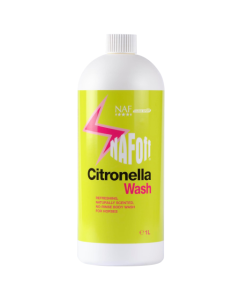How to improve your grass silage with Ecosyl
-

- 13 Jul 2023
- 0 Comments

It is essential to take good care of grass silage made this year. Increasing milk production from home-grown silage is a great way to improve profitability.
Good quality silage starts with good quality grass, and cutting at the right stage of growth is key to achieving this, a one-week delay in cutting is equivalent to 1.2l of milk/cow/day. Allowing crops to “Bulk up” may mean more silage in the pit on any single cut, but generally cutting more often means you will grow more grass through the season – so potentially more silage of a better quality.
Read more: Is it worth taking an extra cut of silage?
With longer drier periods of weather becoming more common, the luxury uptake of nitrogen can be an issue following rain, as the N may not have been used up by the plant due to lack of water, so it is always best to test the grass before mowing if in doubt. As excess nitrogen in the crop will buffer the silage’s fermentation. This increases the argument for using a proven additive to improve fermentation efficiency.
In fact, the additive Ecosyl has been shown to reduce dry matter (DM) losses by half in grass silage trials, as well as producing a more efficient fermentation.
What benefits can an additive provide?
Ecosyl has also been shown to improve digestibility by an average of 3 D units, and numerous trials of feeding silage preserved with Ecosyl have shown an average of an extra 1.2 litres of milk per cow per day. Based on 1 tonne of silage feeding 25 cows, an extra 1.2 litres per cow equates to an extra 30 litres of milk produced per tonne of silage.
Although sugars may be high in summer grass, this isn’t a reason to leave silage untreated. High UV light levels can kill off the natural population of bacteria present in grass that would otherwise carry out fermentation. By comparison, Ecosyl leaves fermentation less open to chance by applying 1 million ‘good’ bacteria per gram of forage treated.
As well as using an additive, it is also important to follow other best practice silage-making techniques. Don’t cut grass too low looking for extra bulk. If you do, regrowth will be slower, plus the sward base contains undesirable microbes that interfere with silage preservation, and it is lower in digestibility anyway.
Consider the wilting period
In addition, make sure the grass is wilted correctly. Wilting down to 28-32% DM is the optimum because this both minimises nutrient losses in the field and in the effluent, but it is important to wilt rapidly. The longer the wilting period, the more sugar and protein in the grass are broken down before it’s ensiled.
Wilting time can be reduced by tedding grass promptly after cutting. However, take care not to over-wilt summer-cut grass. It tends to be lighter than first-cut and loses moisture faster in the hotter weather. If silage is made too dry, it is prone to losses from heating.
In addition, chop grass to the correct length for its DM content – for example, 2.5cm for 30% DM grass. Correct chop length aids consolidation to exclude air, which is crucial for good fermentation and to reduce losses from heating.
When filling the clamp, clamps should be filled in horizontal layers no more than six inches deep to aid consolidation and rolled with sufficient weight.
Grass at 30% DM needs 25% of its weight coming into the clamp per hour to be rolling it to compact it properly. So, 100 tonnes per hour at 25% of its weight needs 25 tonnes of machinery constantly rolling the clamp.
Ultimately, the aim is to meet as much of the animal’s feed requirements as possible from home-produced forage and silage. By producing the best silage you can, it puts you in a much stronger position. Good silage is like money in the bank.


Grass & Roots 2025 Brochure
Request a copy of our Grass & Roots brochure, choose to receive either a printed copy or a digital copy.
Share:

After graduating from UCW Aberystwyth with BSc Hons in Agricultural Botany, Simon went on to achieve a PhD from Imperial College London, researching the Sclerotinia Diseases of Arable Crops.
His career began in 1984 on a field trials station in Wiltshire, before moving to the Pathology department of the National Institute of Agricultural Botany, Cambridge.
In 1990 Simon took on a more commercial role as a crop protection specialist covering Cheshire and North Shropshire.
Since joining Wynnstay in 2000, he has been responsible for the company’s crop protection activities and also fulfils the roles of Maize Product Manager and Silage Additive Product Manager.
Posted in Crop Farming & Harvest and Silage Advice




























